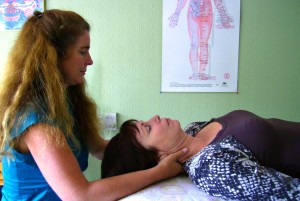
I hope my first blog post ‘So, you want to be a physiotherapist…?’ provided you with some useful information in preparation for the start of your physiotherapy degree.
In this month’s blog, I would like to highlight some useful resources that I felt helped me throughout my 3 years. This list is not exhaustive, and there are many excellent reference books available but the following I found particularly useful.
”Success is the sum of small efforts, repeated day in and day out”. – Robert Collier
As previously discussed you will have numerous lecturers over the course of your degree all of which will introduce key information as well as some evidence regarding certain interventions. However it is then down to you to read more around that topic to enhance your understanding. This will not only help you throughout the course of your degree, but is an important skill to carry over for when you begin your careers to ensure you stay up to date with the most current evidence base.
It’s important to understand that people learn differently. Some people prefer reading from textbooks while others need more of a visual guidance to help engrain their knowledge. Some people, like myself, require an equal mixture of both particularly on those more complicated areas.
You need to appreciate that due to the nature of the topics you will learn, and the complexities of some areas, this knowledge will take some time to establish – repetition and patience is the key! There is nothing more satisfying when things start to ‘click’, when you are able to name the pathway and innervation of a particular nerve, origins and insertions of muscles etc. However, and as I mentioned in my previous blog, it is utilising this knowledge and understanding with a practical setting which is so important! Early on in your studies, start to use your anatomy knowledge and think ‘what am I testing here’, ‘what would I expect if a muscle / nerve was affected?’. This is the key foundation of clinical reasoning and the sooner you start to think in this way the more it will help you moving forward
Grays Anatomy for Students
There are a number of great anatomy and physiology textbooks out there however I found this book extremely useful. Not only is it extremely well written, allowing you to understand the complexities of anatomy, but the diagrams are beautifully drawn and very clear, allowing you to envisage and understand key anatomy and physiology principles.
Youtube
Sometimes, no matter how many textbooks you look in to, a particular piece of information is more difficult to understand. I had this happen many occasions when it came to nerve pathways, pain pathways, pharmacology and even some practical assessment skills. There are also some excellent dissection videos available on YouTube that really do add value to your learning. Having someone show and explain certain principles that you find a little more difficult to understand can be enough to just help it sink in that little better.
Physiopedia

Yes! The VERY resource that you are on now is an excellent place to help with your learning. Why? There are literally hundreds of articles on all different aspects – anatomy, examination techniques, outcome measures etc. And if you wanted to find out about a certain pathology, for example adhesive capsulitis, it is literally all there! The pathology, examination and treatment techniques, evidence and videos are imbedded into the page. They also offer a discount membership to Physiopedia Plus which offer short courses into various pathologies and examination techniques. Not only will this help reinforce your learning, it will also provide you with a certificate at the end of the course which is brilliant for your CPD folder.
Tidy’s Physiotherapy
I purchased this book at the beginning of my studies to obtain a basic understanding of the topics I was likely to expect during my degree. While this book may not be as in depth as some books that focus on a particular field of physiotherapy, it is very comprehensive! Within these pages is information on pathology, examination techniques, treatment modalities, contraindications, rehabilitation and much more. It is a great book, easy to navigate and will compliment your studies.
Trial Guide to the Body / Field’s Anatomy Palpation and Surface Markings
 Being able to palpate an area of the body confidently and effectively is an important part for both diagnosing and treating patients. Both these books provide an excellent reference for enhancing your palpation techniques to ensure that you are on the correct part of the body. I found this
Being able to palpate an area of the body confidently and effectively is an important part for both diagnosing and treating patients. Both these books provide an excellent reference for enhancing your palpation techniques to ensure that you are on the correct part of the body. I found this
particularly useful when booking a practical room with colleagues, picking a body part each week and helping each other improve their skills. Yes, it will take time but practice makes perfect!
Cardiorespiratory Physiotherapy – Adults and Paediatrics / Physiotherapy for Respiratory and Cardiac Problems.
The original book by Pryor and Prasad will no doubt appear on several of your reference and pre-reading lists as its considered an excellent book. However, an updated version from Main and Denehy was released in 2016 and again it provides an excellent resource from anatomy and physiology, pathologies, physiotherapy modalities. This book also has an excellent section on critical care. Should you have a placement in this area, you will discover that your clinical reasoning will also involve blood gases, cell counts, pharmacology and understanding of different surgeries which, at times, can become tricky to understand. However this book goes about explaining these areas in a clear and concise manner.
Flash cards
Both I and several my colleagues found these flash cards extremely useful. On one side, you have a highlighted area of the body and on the other side you have the answer. Used in groups or by yourself, you can test yourself on different muscles, joints, nerve pathways and areas of the brain to solidify your understanding of a particular body part.
Acklands Anatomy
My university had a subscription to this resource and I assume that there would be many others around the country that are also registered. This video resource uses dissected body parts and explains them to you in a logical and straightforward manner. The more complex areas of the body have been beautifully dissected to allow you to understand these regions much easier. And what better way to learn about the body than to see the inner workings of a real body. If you do have a subscription then make sure you check it out!
Pocket Guide to Physiotherapy
I would have to say that this book, if any of the ones I have already mentioned, is an absolute must. It covers musculoskeletal, neurology and cardiorespiratory with reference to anatomy, pharmacology, blood gases, neuronal pathways, diagrams, terminology the lot! Both I and a lot of my colleagues found that this book came into its own during placements, acting as a reference point for anything we were unsure about, and small enough to fit in your pocket to carry around. Not only will this help with your studies, but will be a great resource when you come to get your first job also.
Neuromusculoskeletal Examination and Assessment
 Throughout my degree this is a book I used ALOT, particularly prior to my OSCE examintions and again came in useful when booking practical rooms with friends. It starts with an excellent chapter on subjective history and then continues with excellent chapters on physical examination and assessment. It then takes you through subjective and objective examinations from head to lower limb, with pictures to help with your learning. A very comprehensive book when looking at musculoskeletal examination and one I would recommend getting from your library
Throughout my degree this is a book I used ALOT, particularly prior to my OSCE examintions and again came in useful when booking practical rooms with friends. It starts with an excellent chapter on subjective history and then continues with excellent chapters on physical examination and assessment. It then takes you through subjective and objective examinations from head to lower limb, with pictures to help with your learning. A very comprehensive book when looking at musculoskeletal examination and one I would recommend getting from your library
Maitland’s Vertebral Manipulation
There are many treatment techniques that have been devised over the years and Maitland is one of these. This is a very thorough book designed on the examination and treatment of spinal complaints. Each chapter is very well written and covers topics such as anatomy and physiology, clinical reasoning, neurodynamics and assessment from cervical to lumbar vertebrae. It has a multitude of pictures that help with your practical skills, but what I also like is the ‘online access’ feature. Once logged in, you can watch videos on examination techniques discussed within the book, which is an excellent resource to help develop your manual examination and treatment techniques.
Friends and colleagues
One thing you will learn amongst your colleagues and from your experience on placements is that everyone does things differently in order to form their clinical picture. Don’t be afraid to ask questions. Work with groups of people performing practical skills. See how people perform assessment techniques differently and try a few variations to find one that suits you. By doing this you are taking small ideas from large amounts of people which will aid in the development of your own technique.
So, you have information about what to expect during your time at university and you are armed with a selection of resources that will help develop your understanding. Now, you are ready for your first year!
In my next blog I will be discussing the experiences of my first year; what I felt went well and what, in hindsight, I felt I could have perhaps done differently to make it even more successful and hopefully help you excel in your own studies. See you next time!
No comments:
Post a Comment